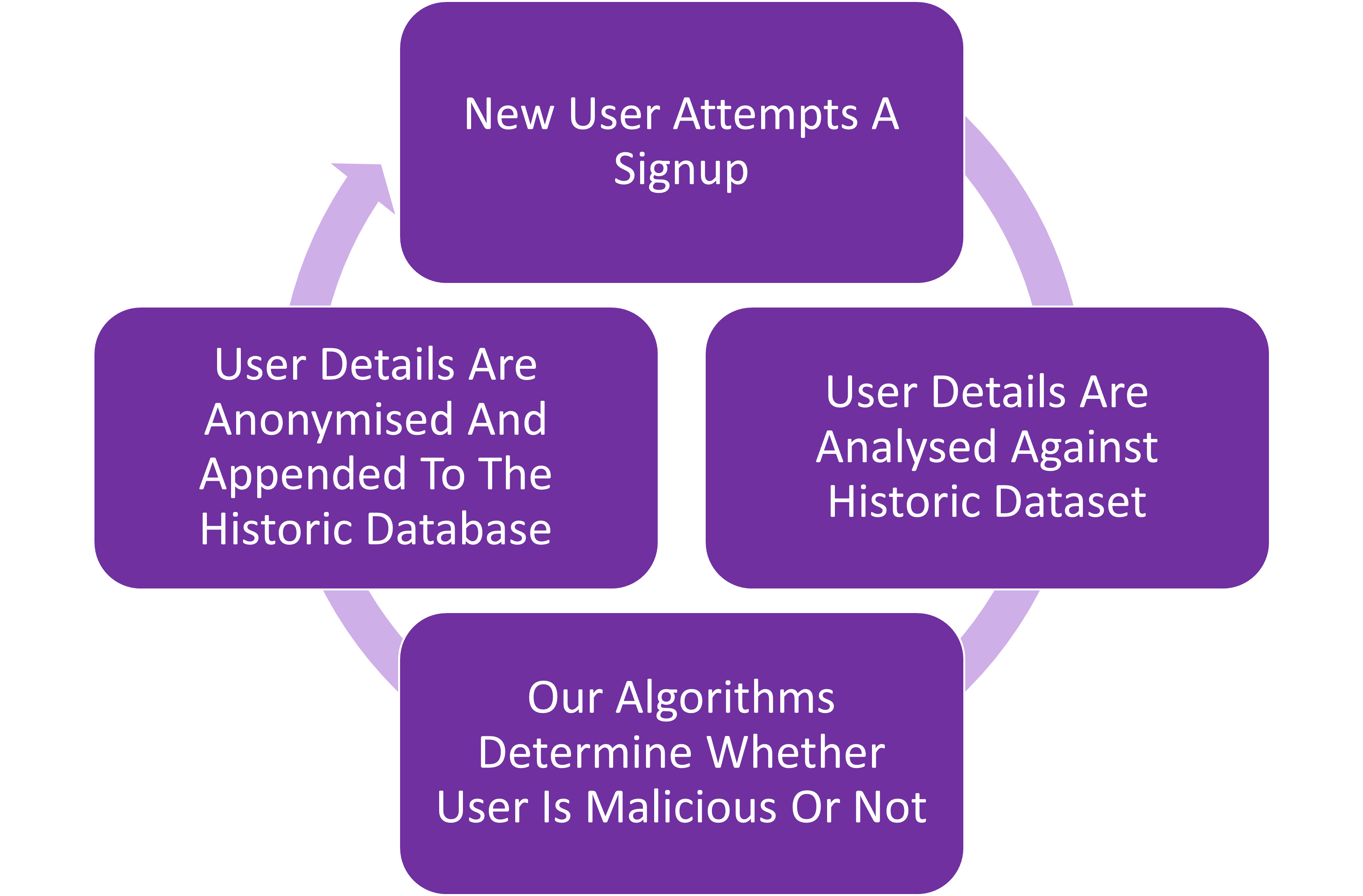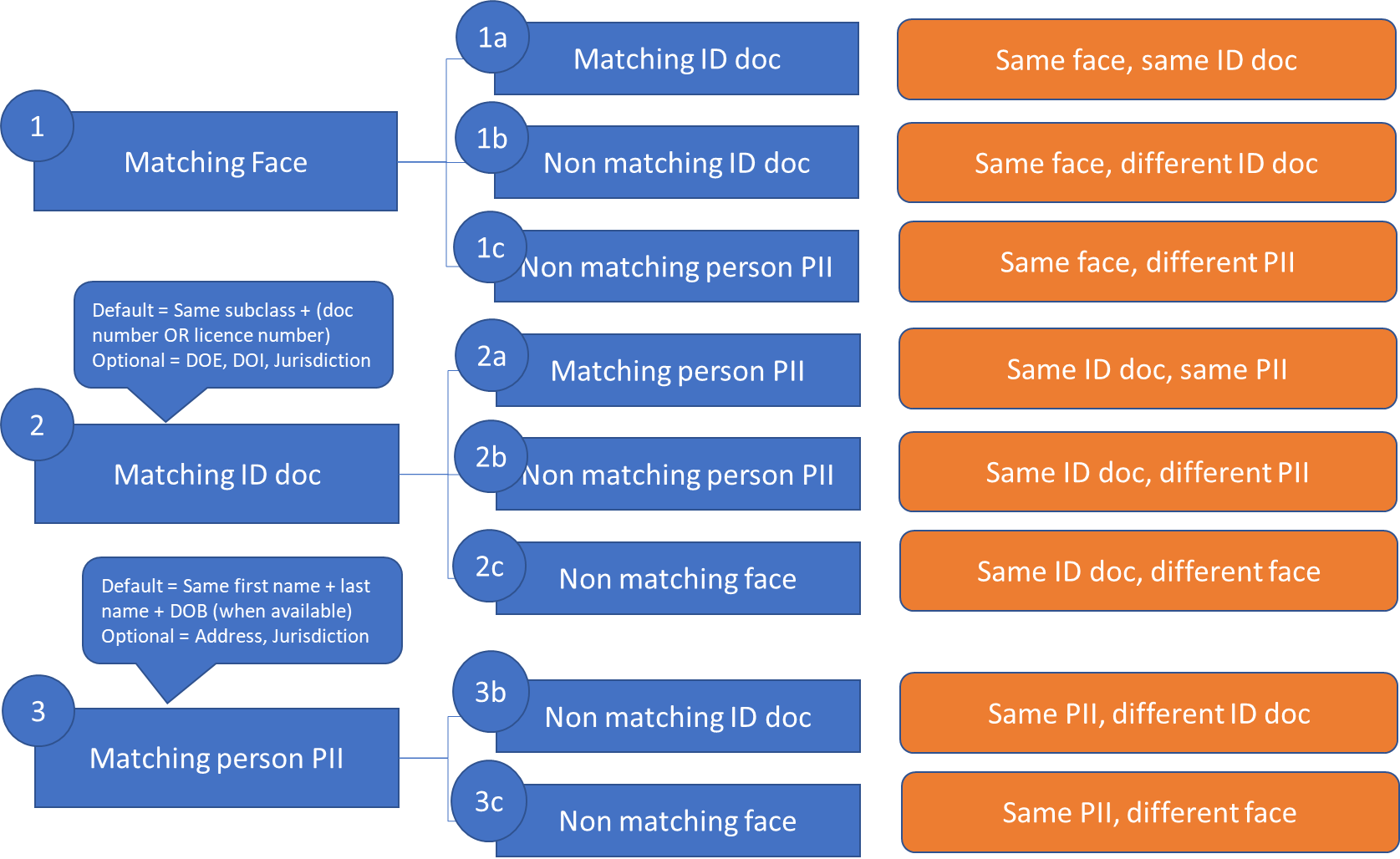Repeat User Checks
Introduction
The Repeat User Check service aims to provide a robust solution to detect fraudulent actors. This service can provide continuous analysis and threat detection of incoming transactions to differentiate between genuine repeat users and malicious users. It relies on a combination of facial recognition and user profiling to identify anomalous users. At the same time, the service ensures data privacy by anonymizing personally identifiable information.
Note: This service should not be relied upon for Zero Day threat detection. Other solutions offered by Truuth such as ID Document Authenticity are specialised to detect such attacks.
Solution Flow

Definitions
PII Fields
Fields such as givenName, familyName, dateOfBirth etc which could be used to personally identify a user are termed as PII fields.
Document Fields
Fields such as licenceNumber, passportNumber, dateOfExpiry etc which could be used to uniquely identify a document are termed as document fields.
Identity Owner
An Identity Owner is the user behind the transaction. This person is the human whose authenticity is being analysed. In context of this service, an Identity Owner is defined completely by PII fields and a face.
ID Document
An ID Document is a photoID (eg. passport, driving licence, proof of age card, national ID card) or non-photoID (eg. Medicare card) whose authenticity is being analysed. In context of this service, an ID Document is a combination of PII fields as well as Document fields. If a photoID is provided, then the face present on the ID is also associated with the ID Document. Alternatively, a separate selfie image can be provided.
Logic for determining fraud
The repeat user fraud check looks for certain patterns of matches of the new identity verification record user compared to history.
The repeat user check finds matches based on:
Matching Face
Matching ID doc
Matching PII
The repeat user fraud check uses the repeat user checks and identifies the following categories of potential fraud:
Same face , different PII
Same ID , different face
Same PII , different face
Same ID , different PII

Updated 7 months ago